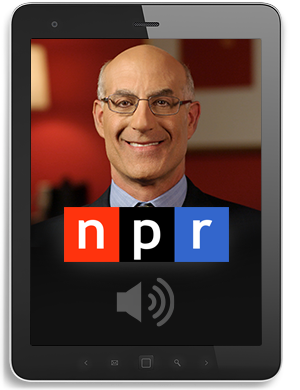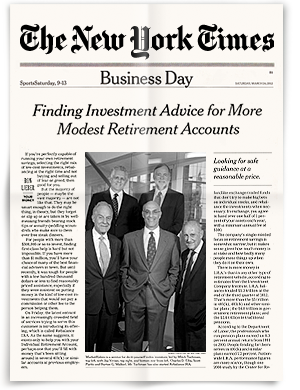The stock market has been strutting into the spotlight lately, with talk — however premature — of a new A.I.-driven bull market popping up nearly everywhere you turn.
Amid all the hoopla, you can easily miss the solid returns being posted by far less glamorous but always important and, at the moment, compelling asset classes: fixed-income investments, including bonds and cash.
Especially for those with short time horizons — whether you’re in retirement or close to it, or saving for a house, education, a car, a vacation or any other worthwhile purpose — these lower-risk investments are worth a close look.
Until a little over a year ago, when interest rates were about as low as they could go, a mantra on Wall Street was TINA. It’s an acronym for “there is no alternative” to the stock market, certainly not from fixed-income investments.
Now, though, it’s a different world: Interest rates, or yields, have risen significantly. That’s bad if you’re borrowing, but if you have money to invest or stash somewhere safe so you can pay your bills, there are plenty of appealing options.
It is debatable whether it’s wise to lock in higher interest rates now, or stick with shorter-term holdings until it’s clear that the Federal Reserve is done raising interest rates. But the time to appreciate the benefits of fixed-income holdings like money market funds and Treasury bills is already here.
Even if you are just starting out in your first job, it’s a good idea to try to keep an emergency fund in short-term, interest-bearing accounts. That’s also true if you have reached a time of life when drawing down your assets, and making them last, are your main concerns. For the moment, it’s possible to get safe returns that are beating inflation.
But Stocks Are Booming
Still, the returns on short-term fixed-income investments are likely to be in the mid-single digits, at best. That’s not going to make you rich. But a winning stock could.
There have been some rough patches in the stock market. Even so, the returns of big tech stocks so far have been fabulous. Nvidia, which churns out some of the chips that make A.I. run, was up almost 190 percent for the calendar year as of Thursday. Apple, Alphabet (Google) and Microsoft were all up more than 35 percent; Meta (Facebook) and Tesla gained more than 100 percent. Wow.
But for high-flying tech stocks like these, timing is everything. Many are still down from the market’s peak on Jan. 3, 2022. So is the benchmark S&P 500 index, which is why I’m not confident this is a bull market for stocks, at least not quite yet.
I’m waiting for the S&P 500 to attain its old lofty level before giving it the bull market designation. And even if the market reaches that pinnacle, I don’t expect to be increasing my personal allocation to stocks.
Why? Two big reasons.
First, I never reduced that allocation when stocks were falling. I held on then because I couldn’t predict where the market was going. (Wall Street prognosticators can’t do it reliably either, as a long history of failed forecasts shows.)
I’m a permanent investor in both stocks and bonds. There’s no need to increase the stock proportion of my portfolio now.
Second, I’m not entirely happy about putting money into companies that aren’t producing profits sufficient to justify the investment. Take Nvidia. Its shares have lifted the returns of the S&P 500, but that’s because it’s trading at a lofty price. Its price-to-earnings ratio, which compares price to profits, is now uncomfortably high — about 10 times that of the S&P 500, according to FactSet data.
Essentially, Nvidia profits will need to soar for many years to justify the company’s price. Perhaps artificial intelligence will make that happen. I’m not counting on that, though.
So I’m hanging in without great enthusiasm. History suggests that the overall stock market will rise over the long haul, but doesn’t tell us anything about what will happen next month or next week, and it doesn’t help much in deciding whether particular companies are worth owning. I’ll hold the entire market through index funds but I’m not eager to take extra risks with my hard-earned money.
That’s where bonds and cash come in. They provide solid income with much less risk than stocks — in theory, anyway.
The Effects of Higher Yields
It didn’t work out well for bonds last year.
At the start of the year, money market funds offered virtually no interest and bond returns ranged from mediocre to terrible, depending on the month. Stocks were said to be the only game in town.
Interest rates rose as the Federal Reserve battled inflation, and the bond market cratered. Because yields (interest rates) and prices move in opposite directions, and yields started off at rock-bottom levels, soaring interest rates led to the greatest bond market losses of the last century. The Bloomberg US Aggregate Bond Index, a benchmark for investment-grade bonds, lost 15 percent in 2022, according to FactSet. The S&P 500 was even worse, with a 20 percent decline, though that was scant consolation if you held a lot of bonds, or bond funds, that you thought were safe.
Now, it’s a different landscape.
Bonds are more reliable than they were last year because yields are already high. Even if they elevate further, there is a plush cushion now, and any potential price declines should be offset, and then some, by the income that bonds are generating. Bond mutual funds and exchange-traded funds aren’t likely to experience declines in last year’s range either. “Bond math tells us it won’t happen,” Kathy Jones, chief fixed income strategist at the Schwab Center for Financial Research, said in an interview.
With the federal funds rate above 5 percent, rich yield has spilled into money market funds and Treasury bills of up to one year in duration. Now that the debt ceiling battle is behind us, and the Treasury is issuing a huge amount of fresh debt, it’s fair to say, once again, that those investments are safe. You can’t make that claim about tech stocks.
There are many ways of comparing the valuation of the stock and bond markets.
It’s a little wonky.
Basically, the higher the bond yields and the lower the stock earnings, the better bonds stack up, and vice versa. One longstanding metric involves comparing the trailing 12-month earnings yield of the S&P 500 with the yields of Treasury securities. At the moment, bonds are doing nicely in this horse race.
The S&P earnings yield is 4.34 percent, according to FactSet, making it lower and, in some respects, less attractive, than the ultrasafe 5 percent-plus yields on one-year Treasuries. Investment-grade corporate bonds are attractive, too. The yields on 10-year Treasuries are lower, well below 4 percent, reducing their appeal.
What all this means is that the TINA acronym no longer applies: There are viable alternatives to the stock market right now.
These comparisons can go only so far. You aren’t likely to receive double-digit annual returns from high-quality fixed-income investments, while you might in the stock market. But the chances of losing a lot of money in bonds are lower, too.
A No-Brainer
With yields above 5 percent, money market funds have a powerful allure. They have been pulling in funds, with total money-market assets in the United States exceeding $5.8 trillion in June, according to Crane Data. Interest rates offered by the nation’s banks are rising, too, but generally trail those of money market funds.
The question, for opportunistic fixed-income investors, is whether it’s time to lock in higher yields by holding bonds with durations of 10 or more years. I’m not sure that it is.
The Federal Reserve has already told investors that short-term interest rates are likely to rise half a percent further this year. Rising yields would hurt the prices of current long-term bonds, as a matter of basic bond math.
On the other hand, the Fed’s monetary tightening could set off a recession, which, in turn, would be expected to lead to lower yields and higher prices for bonds.
This quandary makes the timing of fixed-income — as well as stock — investments tricky.
Ms. Jones suggests taking a “barbell approach,” with much of your investment in very short-term holdings and some of it in five-year bonds, either Treasuries or highly rated investment grade corporates. (A three-year Apple bond has a yield with more than a quarter percentage point premium over three-year Treasury notes, according to FactSet.)
I hold bonds mainly through broad index funds, just as I do stocks, owning a piece of thousands of securities throughout the United States and the rest of the world. How much in stock and how much in bonds — and in short-term holdings like money market funds or high-yield savings accounts — is a matter of personal preference. I don’t alter my approach much, if at all, because of market shifts.
The only real change in my financial life in recent years is that I moved much of my emergency money from bank accounts to money market funds because of superior yields. But with inflation above 4 percent, I try not to kid myself. Even at today’s interest rates, money market funds are barely keeping ahead of rising prices. That’s why I keep putting money in the stock market.
But money market funds and savings accounts and, to a lesser extent, bonds, all serve a critical purpose. The money should be waiting, ready for use, even when the stock market is rocky.






